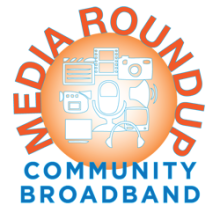Community Broadband Media Roundup - December 12, 2014
This week in Community Broadband networks... partnerships, cooperatives, and going-it-alone. For a background in muni networks, check out this recent article from FiscalNote. The article highlights Kansas and Utah's fight for improving beyond the minimum speeds.
Speaking of minimum, the FCC announced its new "rock bottom" for regulated broadband speeds. Ars Technica's Jon Brodkin reports that despite AT&T, Verizon, and the National Cable and Telecom Association's protests, ISPs that use government subsidies to build rural broadband networks must provide speeds of at least 10 Mbps for downloads.
Rural Americans should not be left behind those who live in big cities, the FCC announcement today said. "According to recent data, 99 percent of Americans living in urban areas have access to fixed broadband speeds of 10/1, which can accommodate more modern applications and uses. Moreover, the vast majority of urban households are able to subscribe to even faster service," the FCC said.
The FCC plans to offer nearly $1.8 billion a year to carriers willing to expand service to 5 million rural Americans.
This is a step in the right direction, but we are alarmed to see a download:upload ratio of 10:1. People in rural areas need to upload as well as download - our comments to the FCC strongly recommended raising the upstream threshold as well and we are very disappointed to see that remain a pathetic 1 Mbps.
And, from TechDirt's own "who can you trust if you can't trust the phone company department," Karl Bode found that a study by the AT&T-funded Progressive Policy Institute concluded that if Title II regulations were passed, the nation would be "awash in $15 billion in various new Federal and State taxes and fees. Bode writes that the study cherry-picked and conflated data:



